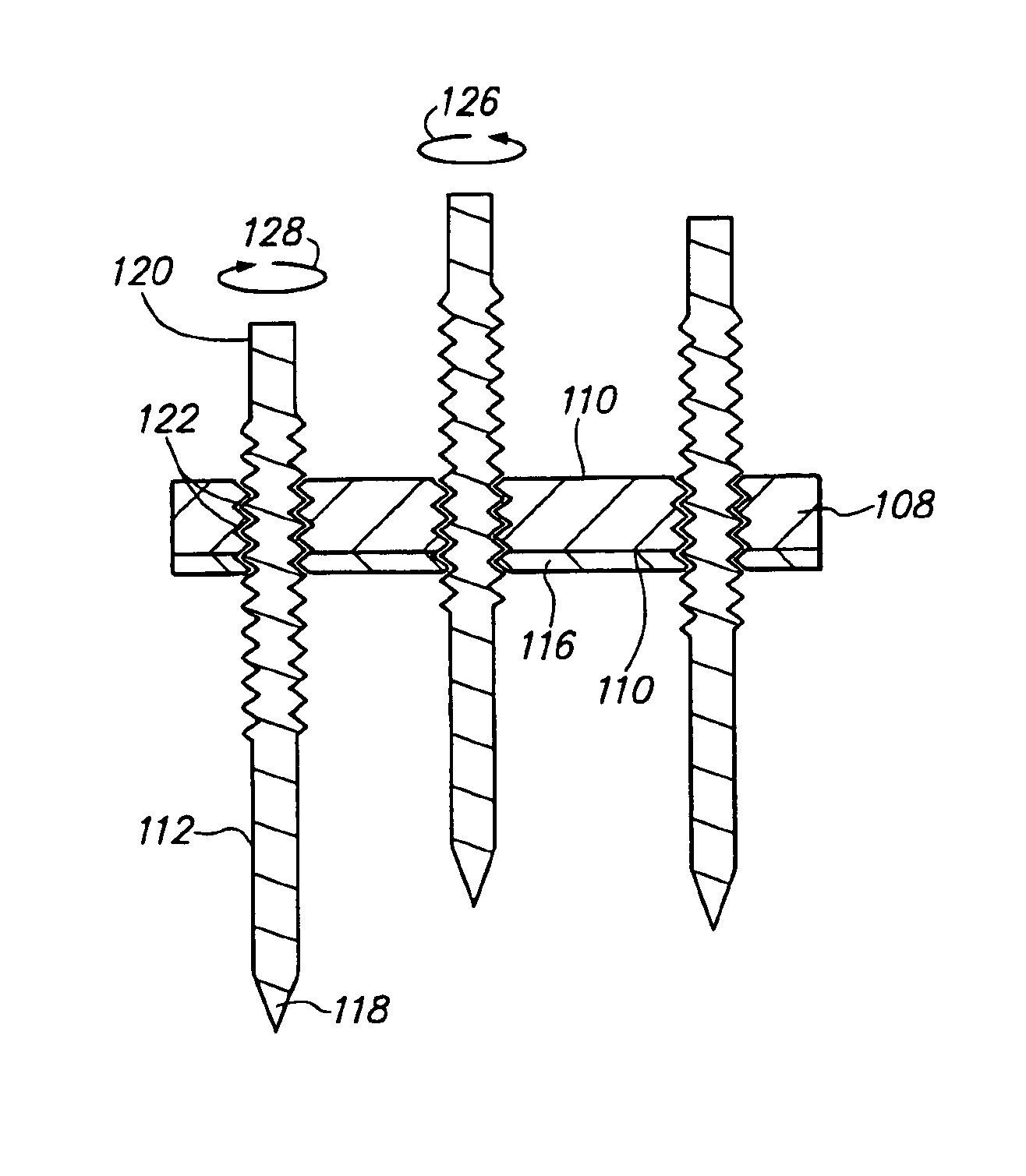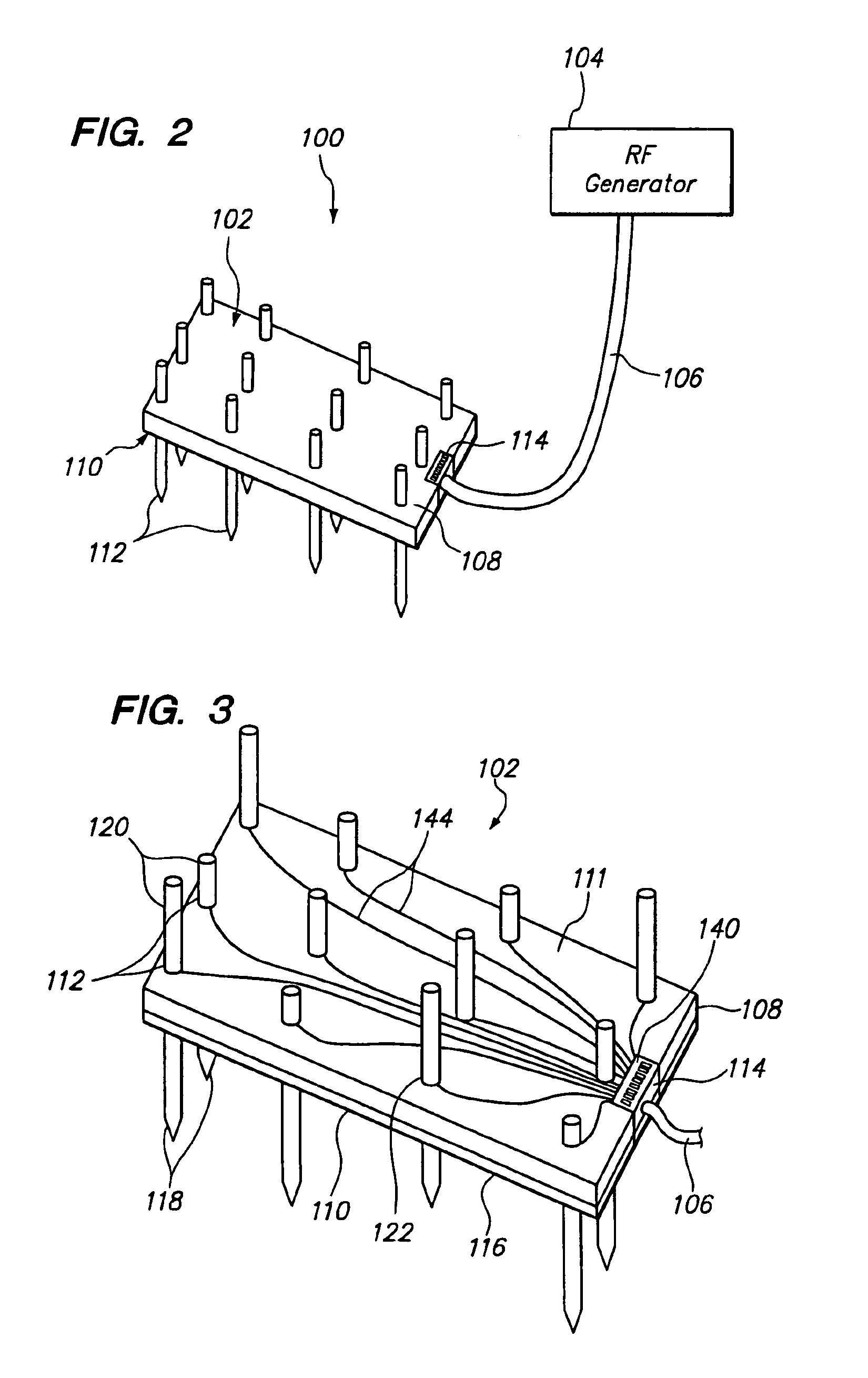Surface electrode multiple mode operation
a surface electrode and multiple-mode technology, applied in the field of tissue ablation devices, can solve the problems of disadvantages of using multiple-mode electrode arrangements, other tissue structures of patients and treating personnel, and the risk of accidental contact of electrodes with other tissue structures, so as to minimize the risk of inadvertent ablation of healthy tissue
- Summary
- Abstract
- Description
- Claims
- Application Information
AI Technical Summary
Benefits of technology
Problems solved by technology
Method used
Image
Examples
Embodiment Construction
[0038]FIG. 2 illustrates a tissue ablation system 100 constructed in accordance with a preferred embodiment of the present invention. The tissue ablation system 100 generally comprises a surface electrode 102, which is configured to be applied to the surface of tissue, e.g., an organ, in order to ablate target tissue therein, and a radio frequency (RF) generator 104 configured for supplying RF energy to the surface electrode 102 via a cable 106 in a controlled manner. In the embodiment illustrated in FIG. 2, only one surface electrode 102 is shown. As will be described in further detail below, however, multiple surface electrodes 102 can be connected to the RF generator 104 depending upon the specific ablation procedure that the physician selects.
[0039]Referring further to FIG. 3, the surface electrode 102 generally comprises a base 108 having a flat surface 110, an array of needle electrodes 112 extending from the surface 110 of the base 108, and an electrical interface 114 for ele...
PUM
 Login to View More
Login to View More Abstract
Description
Claims
Application Information
 Login to View More
Login to View More - R&D
- Intellectual Property
- Life Sciences
- Materials
- Tech Scout
- Unparalleled Data Quality
- Higher Quality Content
- 60% Fewer Hallucinations
Browse by: Latest US Patents, China's latest patents, Technical Efficacy Thesaurus, Application Domain, Technology Topic, Popular Technical Reports.
© 2025 PatSnap. All rights reserved.Legal|Privacy policy|Modern Slavery Act Transparency Statement|Sitemap|About US| Contact US: help@patsnap.com



